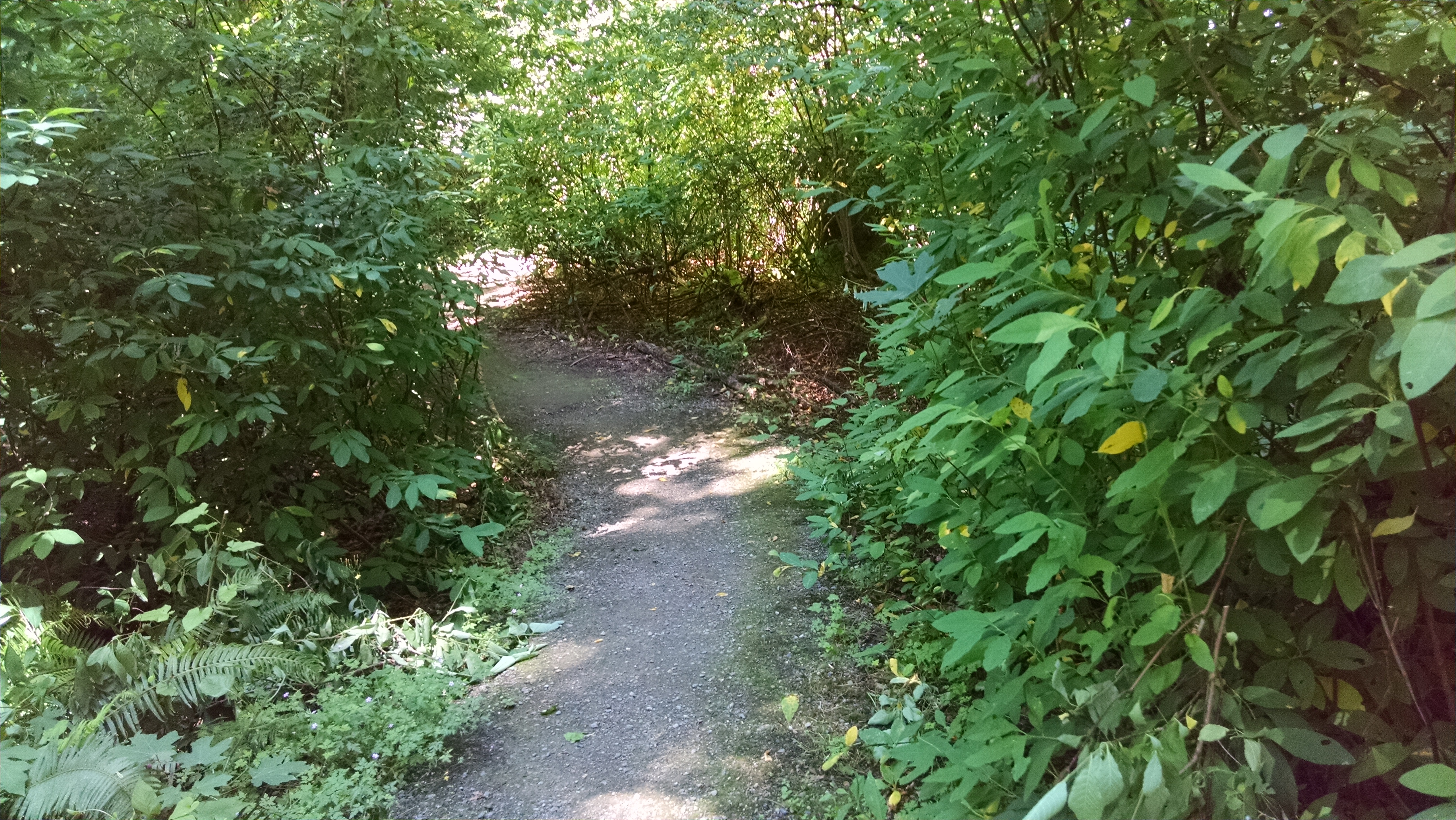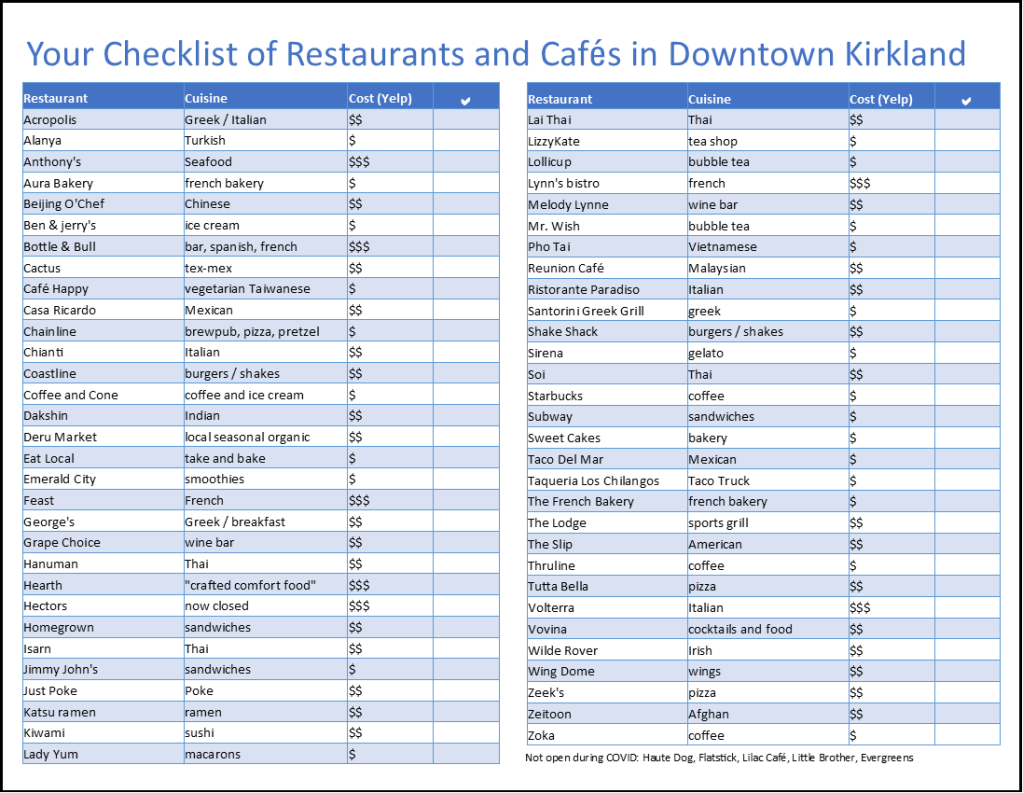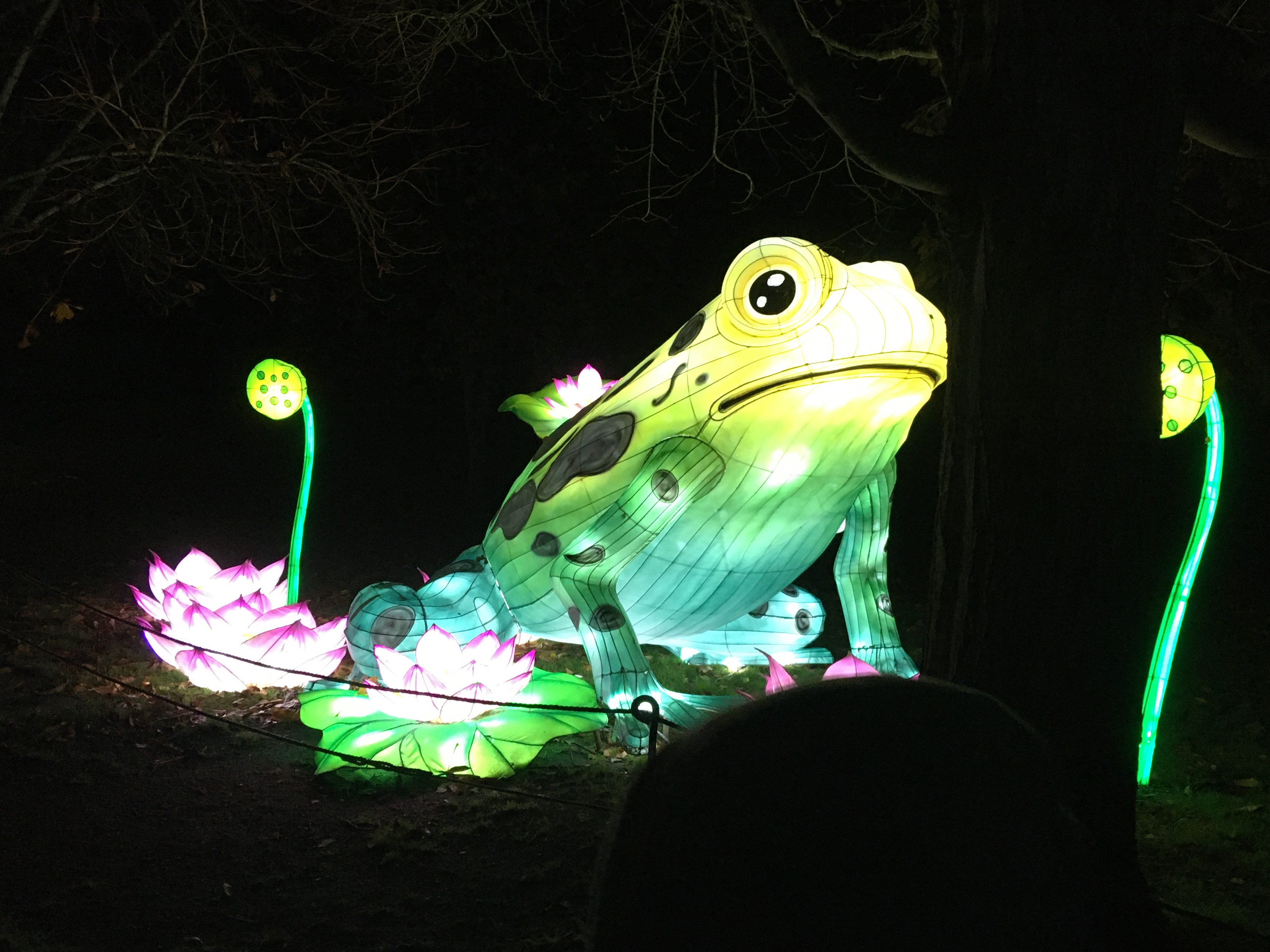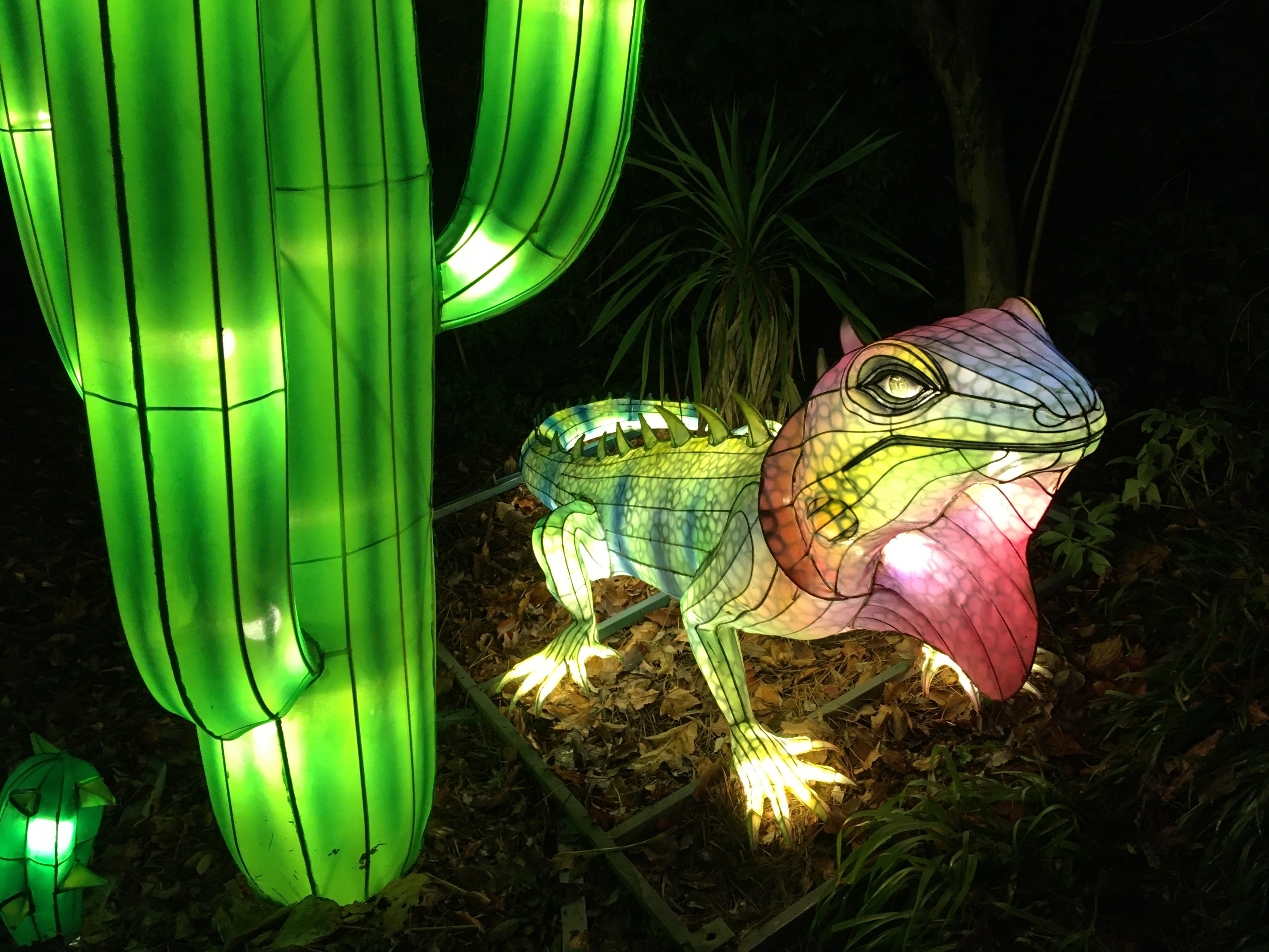
Update on 11/12:
Current state guidelines on outdoor activities do allow for outdoor activities such as walking, hiking, running or biking at each phase of re-opening. In phase 1 it’s only with people from your household. Phase 2 allows for outdoor recreation involving five or fewer people outside your household, camping, beaches, some sporting activities.
State recommendations and King County recommendations are
- people with flu-like symptoms should not participate,
- know before you go – check to be sure you know the status of the park before going (I’ve tried to include links below for finding the current status)
- stay close to home – this is not the time to travel long distances (could carry disease with you) and prepare for facilities to be closed (bathrooms may not always be available) – bring your own food, water, and hand sanitizer
- practice physical distancing – use face masks in any situation where distancing is not possible
And please, Please, PLEASE respect the guidelines!!! If lots of people violate them, the parks get closed down again. 😦
Choosing a Less Traveled Path
When planning an outing, the first parks that come to mind are the most popular ones – Green Lake, Alki Beach, Marymoor, Rattlesnake Ridge. But these can get crowded. But in King County, we are blessed with so many fabulous public spaces outdoors. Here are some less well known gems to consider for your walks during this time. (Some of these are bike-friendly, some are not: check bike maps for bike trails.)
If a park has a playground you would have to pass by to get to the trails, I’ll make a note, because when playgrounds are closed, I know it could be super hard for some little ones to see a playground and be told they couldn’t play there. Below, I’ll link to websites for city parks departments. Here’s the current status of King County parks, and Washington state parks.
Bellevue
Bellevue Parks has over 2700 acres of parks and open space and over 90 miles of trails! There’s a map of Bellevue Parks here. Here are the current covid-19 policies for Bellevue parks. Some options to try out:
Lake to Lake Trail System is ten miles of trails. You could park at many spots along the way and just do a portion of the walk. The Lake Hills Greenbelt is from Phantom Lake to Larsen Lake. Larsen Lake Blueberry Farm has plenty of room for wandering up and down the rows.
Coal Creek Natural Trail is near the Cougar Mountain trails, but has fewer hikers.
Lakemont Park is 16 acres with 3 miles of trails. (The playground is right next to the parking lot, but if you’d rather avoid that part of the park, you could park at the nearby shopping center and there’s a footbridge into the park.)
Lewis Creek has a 2.3 mile walk that takes you through wetlands and meadows. (Playground at one end, but easy to avoid.)
Mercer Slough is 320 acres. It’s got multiple trails to hike to view wetlands and meadow.
There are three parks I know of that you might never know had a mile or more of hiking hidden in them. Robinswood Park – near Bellevue College. Here’s a trail map, with one of our favorite trails through the woods marked out on it. Ardmore Park – near Microsoft. Zumdieck is just north of downtown, and has a nice little loop through the woods. These are all great hikes for younger kids – I’ve done them with many three year olds, also good for elders who aren’t looking for an endurance hike. All three have playgrounds.
If you want a more challenging, straight uphill in the woods hike, try the Weowna Park Trail up hill from Lake Sammamish.
If you’re just looking for a place to sit and read or have non-social play, there’s also tons more parks, both big and small. Some have playgrounds, some don’t. There are also lots of “mini-parks” and “corner parks” that aren’t much more than some grass, some trees and a picnic table. (We ate at one of those the other day, but we threw a blanket out on the lawn rather than sitting at the table, where virus concentrations might be higher.) Check on the Bellevue Parks website to learn more. And more Bellevue trails are listed here. Click here for: Bellevue’s covid-19 restrictions.
Crowded Parks – may want to avoid
Avoid Downtown Bellevue Park – it’s often crowded on sunny days – leave this to the folks who live downtown and may not have cars. Same thing for Crossroads Park, which can be crowded and is in another neighborhood where lots of folks don’t have cars to take them to other options. I would leave Bridle Trails for the horse folks to get the outings that they and their animals need. I would avoid the barn area at Kelsey Creek park which may be more crowded (and may be closed), but there is a nice .9 mile walking trail there, which should be fine.
Kirkland
Here’s the Kirkland Parks map. Here are the current covid-19 policies for Kirkland parks. Some parks to try:
McAuliffe Park (between Totem Lake and Juanita Beach) is a big park with wide open grassy fields, shade trees, an ancient barn, vintage farm equipment and wind mills.
OO Denny – north of Juanita, near the Kenmore border. Nice beach area. (There’s a playground there.) What many people don’t notice is that on the other side of the road, up the hill, there’s a few miles of fabulous wooded trails (here’s a trail map with points of interest). It’s a pretty challenging steep climb, but beautiful. When we went on a beautiful day in late April, we hiked two hours, and passed maybe 20 people.
Big Finn Hill is also on the border of Kirkland and Kenmore. It’s got 9.5 miles of trails back behind the playground.
Carillon Woods – near Northwest College. Some trails into the woods, pretty hilly. I wrote a post about it, though it mostly covers the playgrounds, which are closed now.
Edith Moulton – between Totem Lake and Juanita. Here’s the schematic for when it was re-designed, which includes detailed maps. It’s got a nice easy walking loop.
Juanita Bay (around the corner from Juanita Beach) has a nice path to look over the lake. You may see turtles. The boardwalk there has looked a little crowded when we’ve driven by near dinner times.
There’s also some parks I know nothing about, like “Cotton Hill Park – undeveloped.” Looks like it at least has a trail? Juanita Heights, Kingsgate and Norway Hill also have trails.
Places to sit and read/work outside: Everest Park – I like parking at their north parking lot and sitting by the stream. (The playground is out of sight from there.) Peter Kirk in downtown Kirkland, Terrace Park in Houghton – both of those have playgrounds.
Parks to Avoid
Here are some parks I normally love… but they’re basically small parks with big playgrounds, that are closed, so if that would make your small child sad, avoid Tot Lot, Phyllis Needy, Reservoir, Van Aalst. On the other hand, they’re a fine place for older kids or adults to spread out a blanket and read, or play frisbee with household members and so on.
Juanita Beach, Marina Park, and Houghton Beach can get really crowded on sunny days. Whenever we’ve gone to Marina Park on a sunny day this year, it has felt a little crowded for my comfort. I mask when I’m walking through, but take my mask off if we’re sitting at a distance from others.
Kenmore
Here is Kenmore’s Covid-19 info.
Rhododendron Park has a short trail – a nice amble for a young child or an elder.
Wallace Swamp Creek has trails, but I haven’t had the chance to check it out. (Note, this is NOT an off leash dog park, but some people are under the impression it is, so there may be loose dogs there.)
Burke-Gilman Trail. This is a 20 mile long trail, but portions of it go through Kenmore. It’s paved, so great for bikes, roller blades, strollers. It is quite busy on sunny weekends, but probably a decent option for a cloudy, gray weekday. We have found the Kenmore stretches to be less busy than the Seattle zones.
St. Edward’s State Park. Lots of great trails. Definitely too busy on a sunny weekend, but would be a good outing on a rainy weekday. Large playground – it’s possible to park a ways away and walk away from it, and they might not notice. It’s a state park, so you need a Discover Pass, or it’s $10 to park there.
Here are more Kenmore parks,
Redmond
There are 59 miles of public trails in the City of Redmond! Current covid-19 info for Redmond parks. The City of Redmond website doesn’t provide a lot of detailed information on the trails; however, you can find more info about them on the All Trails website or app, on the Washington Trails Association website or TrailLink.
Trail names to look up:
- Watershed Preserve Trails, off of Novelty Hill Road. 800 acres, with multiple trail options from 0.6 short loops to 4.3 mile hikes. Beautiful walk through green – moss, ferns, trees, ponds…. beautiful. There’s a lot of tree cover, so it’s good for rainy day hikes.
- Tolt Pipeline Trail – 11 miles, Duvall to Bothell. Bridle Crest Trail, 3.3 miles from Bridle Trails to just north of Microsoft – it runs where 60th St would be if 60th went through.
- The Marymoor Connector Trail is a 1.6 mile trail through Marymoor Park. It’s an easy walk with a stroller or an easy bike ride. It connects the East Lake Sammamish Trail (11 miles, up the east side of the lake) and the Sammamish River Trail (10 miles, Redmond to Bothell)
- Farrell-McWhirter off Novelty Hill Rd. near Avondale – this is a farm park and there might be more people over by the animals, but there’s also a 1.3 mile trail through the woods. There’s a self-guided orienteering course there.
Or, there’s the 1.5 mile Viewpoint trail in the Tam O’Shanter neighborhood on the border of Redmond and Bellevue.
Parks to Avoid
I would avoid the dog walk at Marymoor unless you have a dog who absolutely requires that much space for running in, just because there’s probably many humans there. The rest of Marymoor has plenty of open space for walking in or sitting outside in while distancing. (Note: Marymoor is in Redmond, but is a county park.)
Snoqualmie / North Bend
If you don’t live there, don’t go there.
I say that because I have a friend in North Bend who says the locals can’t get out to any nearby parks because they’re all over-flowing with day hikers. If you really can’t resist the area, instead of going to Mount Si, at least check out this article on 7 Trails to Try for Better Social Distancing.
Other Areas
Check out this Parent Map article on State Parks near Seattle. It covers Dash Point in Federal Way, Flaming Geyser in Auburn, Bay View in Mt. Vernon, Camano Island, and Salt Water in Des Moines. And this article on Secret Urban Hikes in Seattle area.
Learn about Nature while you’re out
I’ve written a guide to learning about Northwest Native plants, which includes all the major plants you’ll find on a hike outdoors, and also has a couple of scavenger hunts – one for preschool age kids, one for older kids (or adults), and a dichotomous key. Here’s another great Native Plant Field Guide that was developed by someone as her senior year project.
The City of Bellevue has a scavenger hunt for Lewis Creek that could also be used elsewhere. I found that some of the things on it were harder for kids, so I made my own version of the nature scavenger hunt using theirs as a base.
Walking in Your Neighborhood
Or, if you want to stay super close to home, but need to get outdoors (there are LOTS of physical and mental health benefits of time spent outdoors), you can get outdoors with proper social distancing, in ANY neighborhood. If you’re an adult walking alone, try listening to some great podcasts as you walk, or use this time to call and connect with a friend or family member. If you’re walking with kids, and doing the same path over and over, there are lots of ways to liven it up: one day do a search for all the letters in the alphabet (on license plates, street signs, and so on), another day, do a search for all the numbers, another day, play I spy where you take turns spotting things. Some folks are trying to start some coronavirus-time connections, like placing a teddy bear in their window for kids to spot when they’re out walking – keep an eye out in your neighborhood to see if you can find any signs that this is catching on!
When to Go Out
Obviously, if it’s rainy or cool, there will be fewer people out than if it’s gorgeous weather. So, grab a raincoat or an umbrella and head out in any weather.
You may also choose to access the parks at less crowded times – I would suspect that the most crowded times will be lunchtime, maybe a 4 or 5 pm end of the day time, and weekends, since many people are still working regular hours, whether at home or a work place, or attempting to school their kids during “school hours.”
Before you go out
First, let’s be cautious to take as few germs out into the world with us as possible. Things to consider: If you haven’t changed clothes in a few days (no judgment if that’s the case!), do so before going out. Bring a cloth face cover, in case it’s hard to keep enough distance between you and others. Take your temperature to make sure you don’t have a fever. (This is not a perfect precaution, because you can be contagious before symptoms, but still a good step because if you do have a fever, you should definitely stay home.) Go to the bathroom before you leave the house, so you’re less likely to need to do it when you’re out. (And because many parks facilities and bathrooms may be closed.) And wash your hands before going out!
If you have children, explain to them before you leave that this is a “no touch” outing. (Toddlers may not be capable of resisting all the time, but we can do our best.) I would not bring snacks along if I had a little one, since their hands would be in and out of their mouths over and over, maybe transporting germs in and out.
Note: Rails to Trails also offers a helpful article on the latest expert guidance on outdoor activity and covid-19.
When You Get Home
Leave your outdoor things (coats, shoes, purse) by the door. Don’t carry them through the house. Wash your hands! If you were using your phone, you could clean that too.
More Ideas?
If you have more ideas or any feedback, please add it in the comments!
Elsewhere on this blog, I have tips on
Plus the blog is just generally full of tips about parenting kids from birth to age 9.











